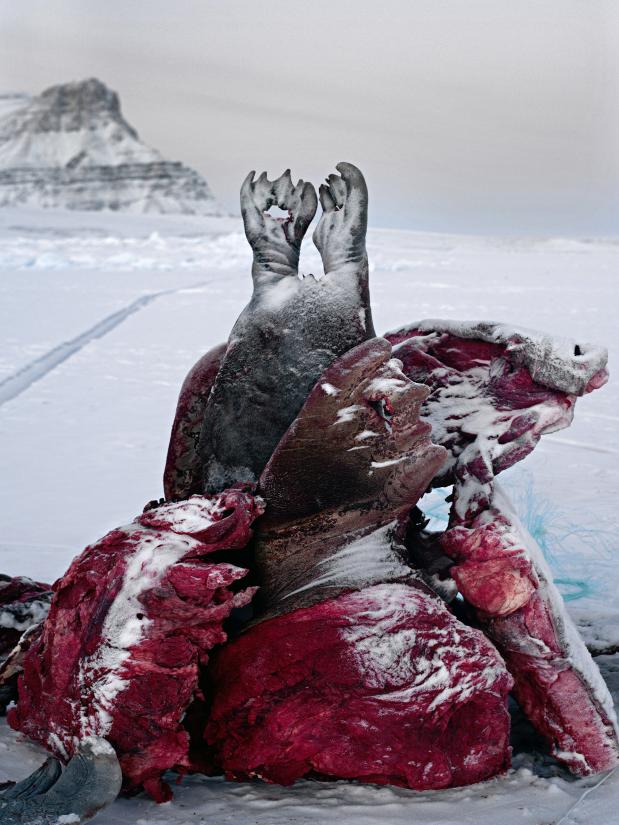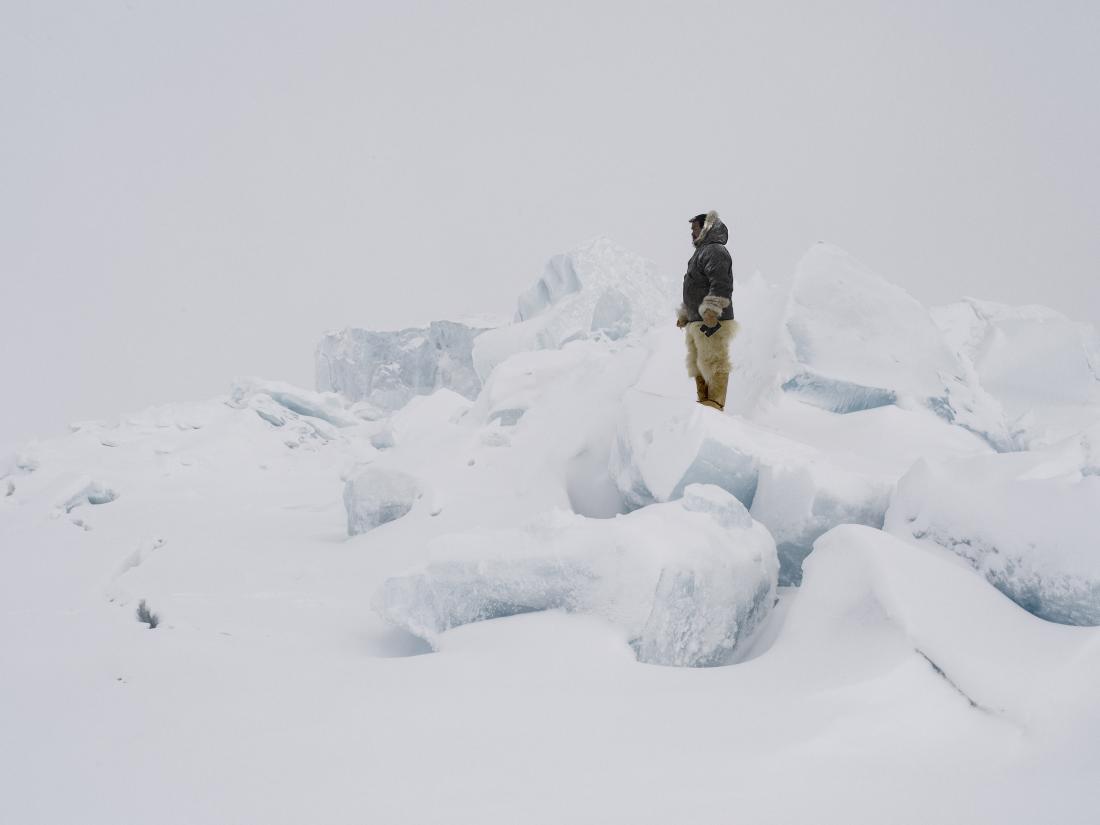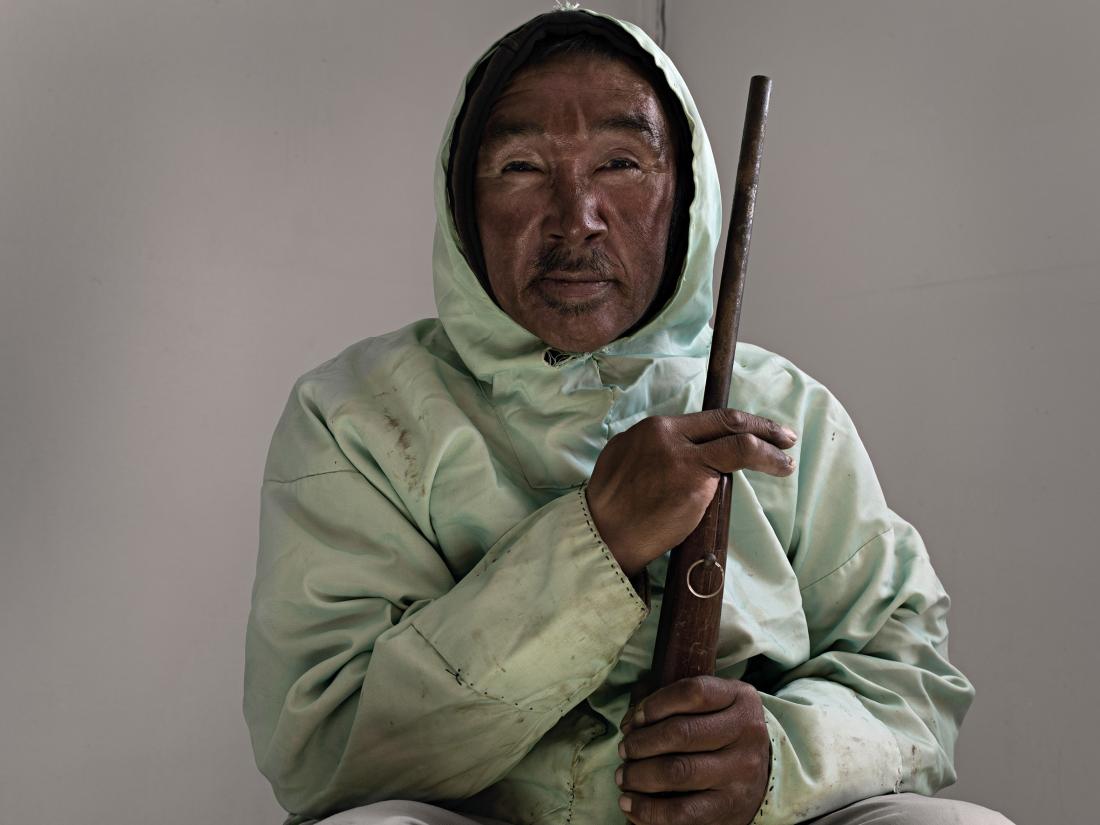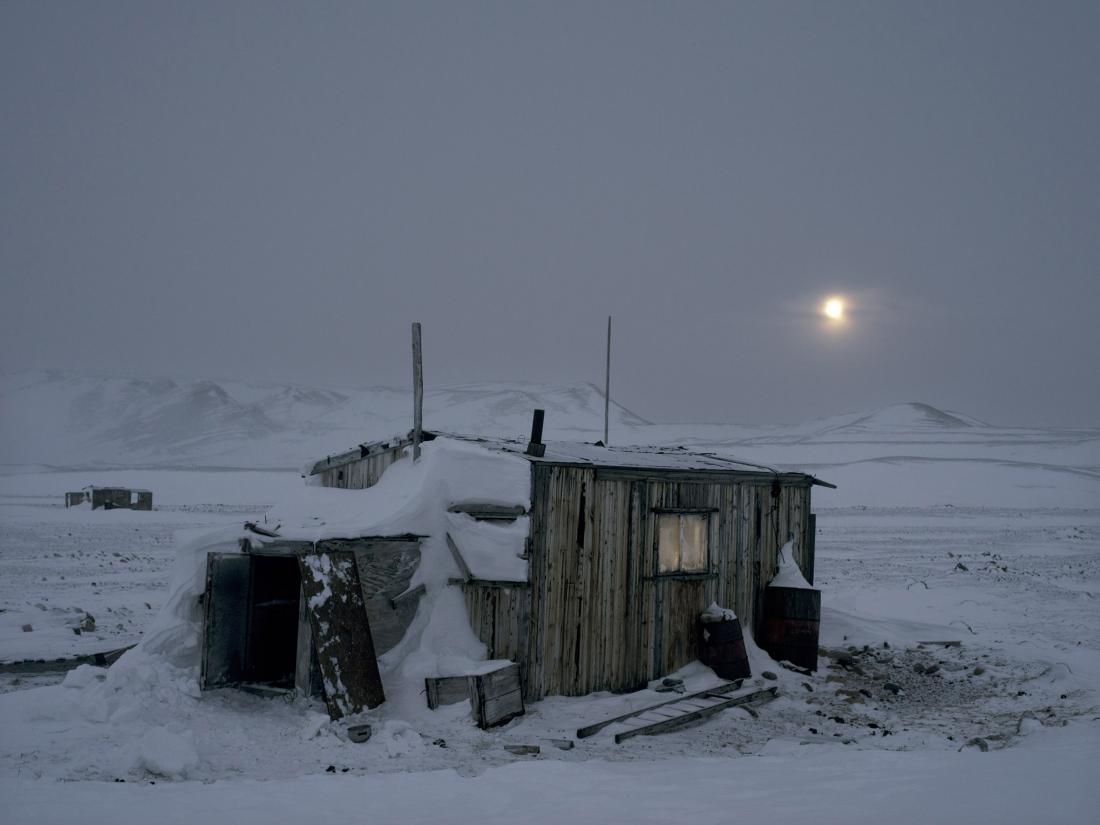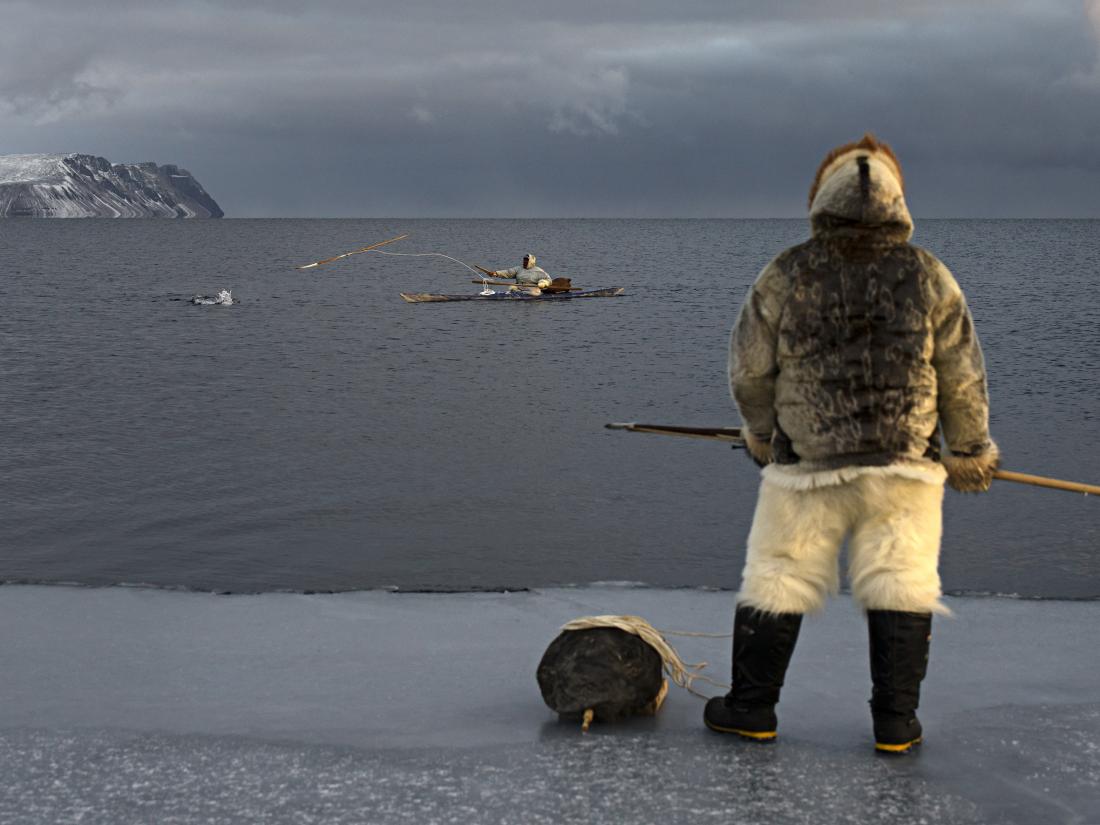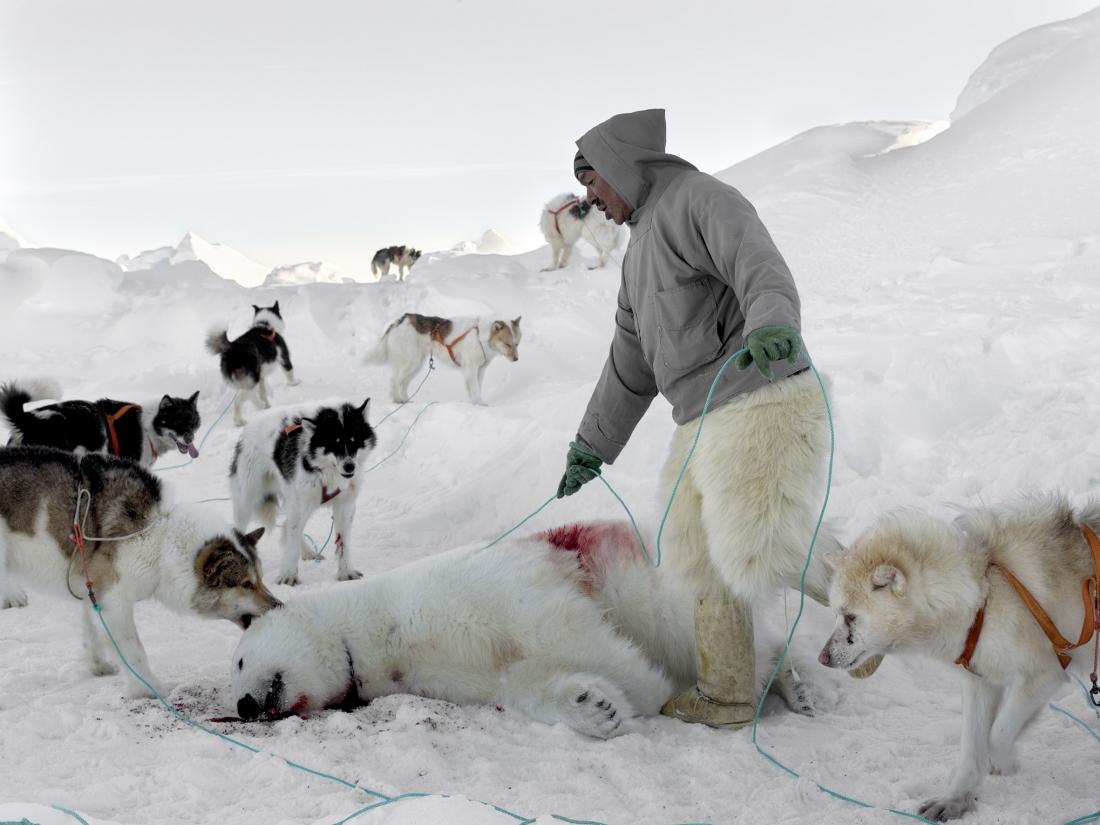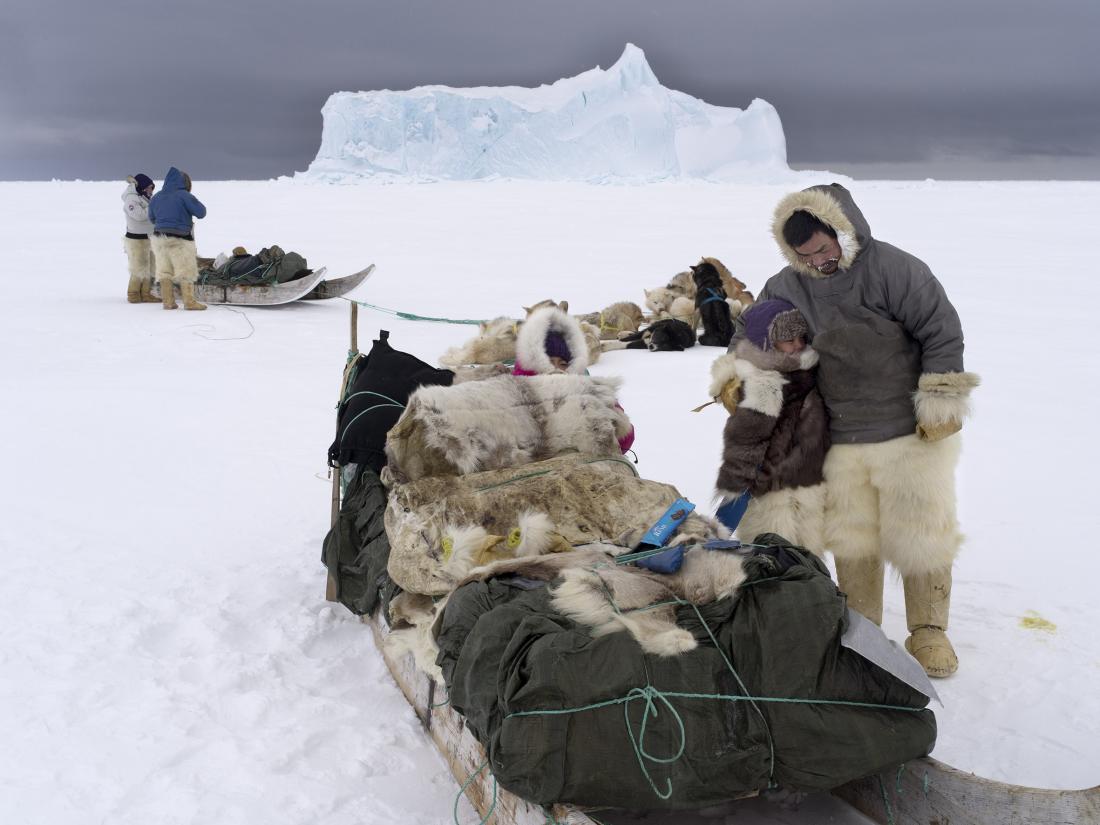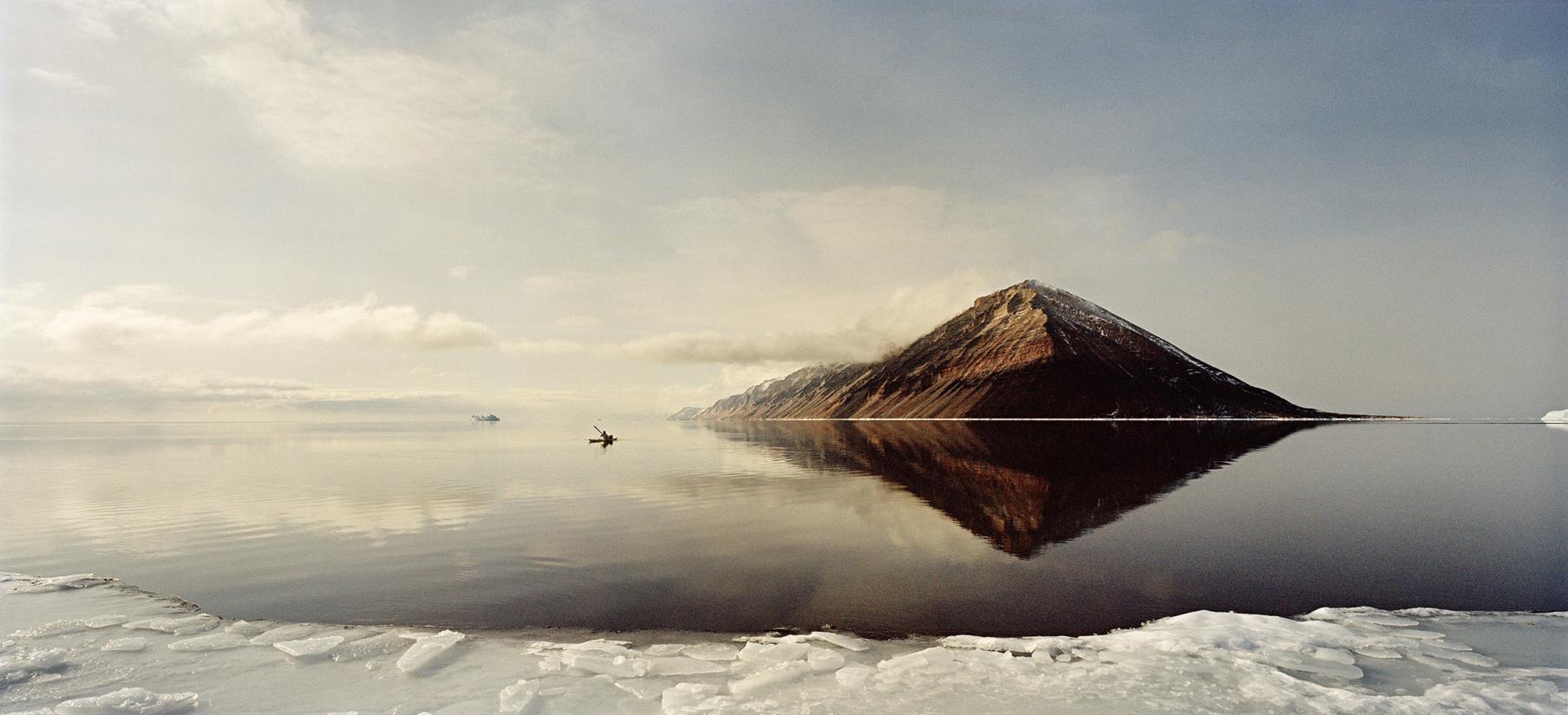Since 2014, Henrik Saxgren has travelled back and forth between Denmark and Greenland. All told, the photographer has spent more than six months by Pittufik with the local population. He has accompanied them on hunts on the sea ice and travelled hundreds of kilometres by dog sled, documenting life in the harsh and monumental arctic nature through his camera lens. The result is the photo series 76° N published in the book Ultima Thule with support from the New Carlsberg Foundation. In connection with the publication, the foundation has also made some of Henrik Saxgren’s photos available as permanent loans to Vesthimmerlands Gymnasium, where they serve as inspiration for classroom projects and general reflection.
Life in Ultima Thule
The term ‘Ultima Thule’ sparks many associations. It is the historical name used about the legendary northernmost ends of the world in the geographic world view held by scholars in antiquity and the middle ages. It served as inspiration to polar explorers Knud Rasmussen and Peter Freuchen in 1910, when they established a trading station by the northernmost Greenlandic settlements in Pittufik and named it Thule.
Like the early polar explorers, Henrik Saxgren has felt a compelling fascination with life and nature in North-West Greenland, he says. The photographer decided to document and offer the general public a glimpse of a unique world that is rarely represented. Although the people living in the Thule region today enjoy modern standards of living, they still make their living hunting marine mammals, as in the time of their ancestors. It is a physically demanding and often dangerous profession, which the photographer experienced first-hand when he went with the hunters to the edge of the ice at 35 degrees Celsius below freezing in the search for walruses, seals and narwhals.
Melting sea ice
The lifestyle and culture of the Thule people are deeply rooted in the arctic ecosystem, which they have been adapting to ever since the first humans settled in the area in the paleo-tiden. This premise is now under threat due to climate change, melting sea ice and reduced animal populations. Thus, Ultima Thule not only deals with life in the Arctic but highlights the common challenges faced by the entire planet.
‘The planet has been around for more than 4.5 billion years, mankind for less than 150,000 years. In that perspective, we are just a brief interlude. The planet calves icebergs and freezes the seas to ice as it sees fit. It lets storms rage and freezing temperatures bite, as it sees fit. It is the planet that sets the terms. If we want to stick around, we have to adapt – or be crushed,’ writes the photographer in the introduction to the book.
Coursework and debate
At Vesthimmerlands Gymnasium, students and teachers are excited about the intensity and character that the photos bring to the common room where eight large photographs are now up on the wall, says the school’s rector, Jette Rygaard Poulsen.
‘As rector, I am delighted to see the young people debate and comment on the art on our walls. All the teachers are very positive, both about the visual facelift that this has been for the room and about the great opportunities for including the photos in their work in the classroom. Our teachers of religious studies in particular plan to use them as a basis for themes about other cultures and religions,’ she says.
